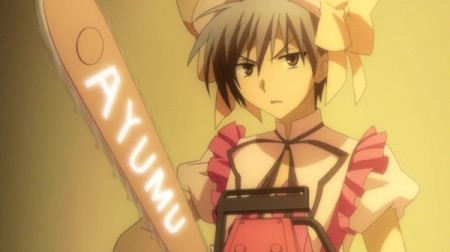Ask John: Why Doesn’t a Mahou Shounen Genre Exist?

Question:
What do you think is the reason that magical boy anime don’t exist?
Answer:
An examination of the history of transforming magical girl anime in relation to gender roles should go a long way to explaining why anime has no “mahou shounen” genre. In Japanese culture, just like American culture, boys are indoctrinated to be masculine, dependable, and outgoing enough to solve their own problems and provide for their own needs. Girls are indoctrinated to be feminine, graceful, attractive, and responsible. The first two magical girl anime (excluding 1967’s Chibikko Kaiju Yadamon which did not star a human girl) established the conventions that typified magical girl anime for generations. The 1966 Mahoutsukai Sally and its descendants including Mahoutsukai Chappy, Majokko Megu-chan, Majokko Tickle, Fushigi Mahou Fun Fun Pharmacy, and Ojamajo Doremi all revolve around the concept of a human girl using magic to amuse herself and solve simple domestic problems. The 1969 Himitsu no Akko-chan television series and its decendents including Fushigi na Melmo, Mahou no Yosei Persia, Mahou no Tenshi Creamy Mami, Mahou no Princess Minky Momo, Hime-chan no Ribbon, and Magical Stage Fancy Lala all revolve around a human girl using magic to make herself grow older or become someone else in order to accomplish goals that she can’t achieve due to being a preadolescent girl. In other words, magical girl anime are traditionally wish fulfillment stories for young Japanese girls expected to fill temperate, domestic roles. The concept of girls using magic to battle supernatural evil never came into prominence until the 1992 Sailor Moon anime television series premiered. So if the same wish fulfillment philosophy is applied to shounen anime, boys are expected to be masculine and aggressive, thus anime for young boys revolves around piloting robots to gain power, or offers role models like spies (Wanpaku Tanteidan), ninja (Sasuke, Kamen no Akakage), masked heroes (Gekko Kamen), fighters (Kurenai Sanshiro), or sports stars (Captain Tsubasa, Kyojin no Hoshi) in place of magic. Even in the rare instances in which anime boys do use magic, as in the 1959 Shounen Sarutobi Sasuke movie, magic is used to battle evil, to enable the boy to become a hero rather than entertain the boy or transform the boy into a different person. The same philosophy still applies today. In contemporary anime that features male characters that use magic, such as Densetsu no Yuusha no Densetsu and Hagure Yuusha no Estetica, the magic enhances the boy’s innate strengths instead of transforming to boy into someone or something else. The tradition within anime that magic enables girls but enhances boys is so ingrained and solidified that in the rare instance that it’s challenged, the result is a ridiculous parody like Ayumu Aikawa in Kore wa Zombie Desu ka? not becoming more masculine and more dependable but instead transforming into an embarrassed cross-dresser.
The 90’s advent of strong, aggressive, assertive magical girls that began with Sailor Moon (I’m consciously excluding cyborg girls like Cutey Honey and Limit-chan who don’t use magic) and evolved into Lyrical Nanoha, Pretty Cure, and Madoka Magica are not traditional magical girls because contemporary Sailor Moon descendants are not wish-fulfillment characters for young girl viewers; they’re gender-swapped parallels to traditional shounen heroes. While the magical girl genre has spun off an evolution that parallels traditional shounen tropes, shounen anime and male characters have not spawned a subgenre that adopts feminine characteristics because real-world social conventions dictate that boys should not adopt feminine characteristics.

